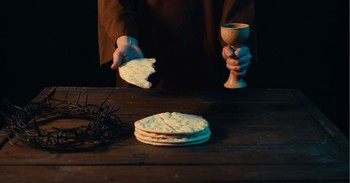Within the Catholic religion, there are many women saints. Each woman saint is referred to as a “patron” of various causes. A woman would become a saint if they did some type of wonderful act or accomplished an amazing feat in their lifetime. There is not an exact number of women saints, however, it is known that there are more men saints than women saints.
Women Saints
The most popular women saints within the Catholic religion are Saint Mary, Saint Elizabeth Ann Seton, Saint Faustina, and Saint Joan of Arc. This article will detail each of these women saints and why we should know about them. It is important to note that this is not a complete list of all of the women saints as there are hundreds of women saints within the Catholic religion.
1. Saint Mary
Mary was a virgin when she conceived Jesus as she had no relations with Joseph until after Jesus had been born (Luke 1:26-38). Mary is referred to as the “Queen of all saints” (“Top 20 Popular Saints For Women Or Girls,” Catholic Saint Medals). While Mary was an important figure in the life of Jesus, she is not to be worshipped.
Mary was a kind girl who trusted God and demonstrated great faith. However, she should not be the center of a believer’s focus. Jesus Christ, who is God, is the only One we should worship (John 1:1; Titus 2:13; Psalm 95:6).
Within the Catholic religion, Catholics pray to Mary for her help as she is the patron saint of many different causes (Catholic Saint Medals). While Mary is a good example of having faith in God, Christians should not pray to her. Mary does not hear our prayers, nor does she answer prayers.
God is the only One who answers our prayers. 1 John 5:14-15 says, “This is the confidence we have in approaching God: that if we ask anything according to his will, he hears us. And if we know that he hears us — whatever we ask — we know that we have what we asked of him.”
Thus, God is the one who hears our prayers and answers prayers. Mary is not God, which means she is not divine. Mary was a human being just as you and I are human beings. We do not have divine abilities and neither does Mary.
Therefore, Mary is a great example of being faithful, having faith, and being brave, but she should not be an object of worship, nor should Christians pray to her.
2. Saint Elizabeth Ann Seton
Elizabeth Ann Seton was originally an Anglican but converted to Catholicism. She is known as the patron saint of Catholic schools and widows. Elizabeth Ann Seton was the first American woman to become a Catholic saint as she was not born into the Catholic religion (“St. Elizabeth Ann Seton — Our Patron Saint,” The Catholic Community of St. Elizabeth Ann Seton).
She was alive from 1774-1821, however, she did not officially become a saint until 1975 by Pope Paul VI. Christians should know about Elizabeth Ann Seton because she was vital in the establishment of Catholic schools, and she stressed the importance of women receiving proper education.
She is also known as the patron saint of widows because she had to overcome great difficulties after she became a widow after her husband’s death (Catholic Saint Medals). Despite going through these difficult times in her life, she remained faithful to God and accomplished great things to further education amongst Catholic girls and boys.
3. Saint Faustina
Saint Faustina, also known as Saint Maria Faustina Kowalska, was a young girl when she first decided she wanted to follow God. Saint Faustina is now known among the Catholic religion as the “Apostle of Divine Mercy” (Catholic Saint Medals).
During her life, Saint Faustina reported that she experienced many divine visions of Jesus. Her first vision came when she was 19 years old. She recorded in her diary that the vision was of Jesus and that He told her to leave where she was and join a convent in Warsaw (St. Faustina Kowalska, Catholic Online).
She is accredited as being the saint of mercy after her vision of Jesus revealing Himself as the King of Divine Mercy to her. According to Saint Faustina, she was “asked to become the apostle and secretary of God’s mercy, a model of how to be merciful to others, and an instrument for reemphasizing God’s plan of mercy for the world” (Catholic Online).
While Saint Faustina can be a good example of having a passion for Jesus, Christians should not follow after her and search out for divine visions. Jesus does not appear to believers today in divine visions.
Rather, the only way God communicates to Christians today is through the Bible. 2 Timothy 3:16-17 says, “All Scripture is God-breathed and is useful for teaching, rebuking, correcting and training in righteousness, so that the servant of God may be thoroughly equipped for every good work.”
The Bible is the living Word of God (Hebrews 4:12). Thus, it is good to learn about Saint Faustina, but one should not follow in her steps. The Bible does not talk about Jesus returning to give divine visions to various people throughout time.
It is highly plausible that whatever Saint Faustina saw could have been demons. It is never safe for people to search out visions of Jesus as He does not speak to us through mystical ways.
4. Saint Joan of Arc
Saint Joan of Arc is a famous woman saint within the Catholic religion, who is the patron saint of France and of soldiers. Similar to Saint Faustina, Joan of Arc believed she had divine visions given to her by God.
At the age of 13, she had a vision of “Saint Michael, Saint Catherine, and Saint Margaret, each of whom told her to drive the English from French territory” (St. Joan of Arc,” Catholic Online). Saint Joan of Arc dressed as a man to fight in battle as she believed the Lord had told her to take part in the war.
She was burned at the stake because she dressed like a man, claimed she had divine visions, and was accused of being a witch (Lesley Kennedy, “Why Was Joan Of Arc Burned At The Stake?” History).
Christians should remember Saint Joan of Arc for her bravery to die for what she believed in. Again, Saint Joan of Arc should not be worshipped or prayed to as she was only a human being. Joan of Arc was a brave and gutsy young woman who had a passion for God, however, we cannot be dogmatic that her visions came from God.
While it is terrible, she was burned at the stake, Christians should not try to seek our mystical encounters with God. It is very possible that Joan of Arc could have seen demons or possibly suffered from schizophrenia or another mental illness that causes an individual to experience hallucinations (Jennie Cohen, “7 Surprising Facts About Joan of Arc,” History).
What Christians Should Know
It is important to know about these different women saints, however, Christians should not adore, worship, or pray to these women. Each woman who has been sainted by the Catholic Church were only human beings.
They are not divine women, prophets, or angels. Each of these women can leave us with good examples of placing our faith in Christ, being brave to follow Him, and helping others to know about God, however, Christians should not seek our visions from God as He does not communicate with believers in this manner today.
God has given us the Bible for us to learn about Him and hear from Him. If a Christian wants to get to know God, they should pray to God, read the Bible, and listen to Him through the reading of His Word.
For further reading:
What Does the Bible Say about the Value of Women?
How Did Jesus Treat Women in the Bible?
How the Women in the Bible Were Revered, Respected, and Diverse
What Does it Mean to be a Proverbs 31 Woman?
What Does it Mean to be a Godly Woman?
Photo Credit: ©iStock/Getty Images Plus/nyul




